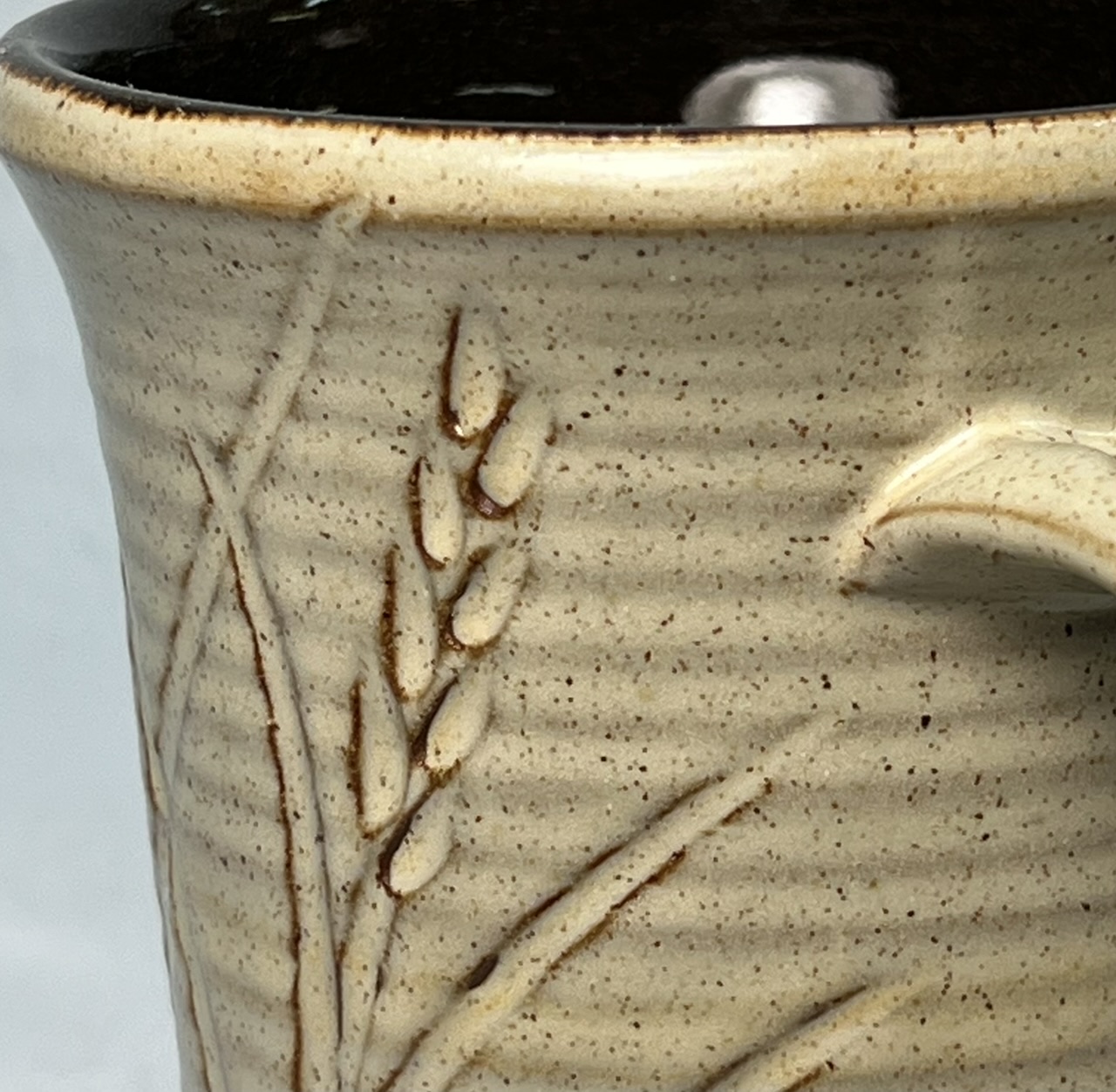| Monthly Tech-Tip | No tracking! No ads! | |
A modern electric test kiln, a marvel of utility
This is a ConeArt 119D, 0.57 cu ft, 11"x9" cone 10 test kiln. While there is 120v model, don't take a chance, go with 220v (actually ours is 208v). Ours fires 1000 times on a set of elements, mostly in the cone 4-7 range. The old BX controller is shown here, it is $300 cheaper, but don’t even think about getting that! Do not use your electric like a pop-up toaster, make it a technological enabler of custom firing schedules, get the Genesis GX. Having good control of firing is a key to success, and this is superior for that. These kilns are economical to fire. Big enough for 5 mugs, but I typically fire a dozen clay and glaze test specimens. We make our own super-thin shelves. The controller holds about 20 schedules, even controllable remotely (it is Wi-Fi connected). We can fire cone 04 up and down in three hours! Of course, since this type of kiln can enable so much more testing, a code numbering system is needed - and a place to record and search all the results: An account at insight-live.com.
Related Pictures
A test kiln with firing controller: A necessity.

This picture has its own page with more detail, click here to see it.
Every potter should have one of these. Every clay body manufacturer should have one. This one has a Bartlett Genesis electronic controller, you will never go back after having one. Start with a kiln like this and then graduate to having a large, second kiln (or more of these if you are doing lab or development work). We have done 950 firings on this one in the past few of years, it is still like new. Ongoing testing is the key to the constant development of your products and their quality.
A test kiln: Enabler to testing glazes
And to evolving your own glaze recipes

This picture has its own page with more detail, click here to see it.
The evolution of the quality and aesthetics of your work, and even your ability to cut costs, are stunted when you depend too much on others (e.g. for firing, for premixed glazes). This mug is a good example of tests I need to do. This is G3933, made by adding iron oxide, rutile and tin oxide to a 75:25 blend of our base matte and glossy glazes (G2926B and G2934).
-It is crawling at some of the sharp angles of the incised decoration, would a little CMC gum fix this?
-Would an 80:20 blend of the two glazes give a little more matteness?
-Our red-burning body gives better color at cone 5, would this glaze be richer and more matte on it in the C5DHSC slow cool schedule?
-I want to test increases in the rutile (for variegation), iron (for better color) and granular manganese (for more speckle).
-Would a Ravenscrag Slip base glaze be a better host for the rutile, iron and tin?
Having a small test kiln puts all of these changes on my radar. An account at insight-live.com to document everything well brings it all together.
Making your own hexagonal shelves using calcined alumina

This picture has its own page with more detail, click here to see it.
This homemade kiln shelf (left) for our test kiln was fired at cone 10. This is a third the weight (and thickness) of the cordierite one on the right. However it does not have the thermal shock resistance of cordierite, uneven heatup can crack it. It is made from a body I slurry up consisting of 96.25% calcined alumina and 3.75% Veegum. It rolls out nicely and dries flat between pieces of plasterboard, taking about three days (if you try this and the body is not plastic then your alumina is not fine enough or you did not blender mix the slurry well enough). Alumina produces a lighter shelf than Zircopax and shrinks much less than refractory bodies we have tried (e.g. L4543), I cut the slab only 1/4" larger and it has fired to the same size.
Videos
Links
| URLs |
https://coneartkilnsshop.com/index.php/product/119d/
ConeArt 119D Cone 10 110v Test Kiln |
| URLs |
https://www.youtube.com/watch?v=gbA_Jv6J_BY
Bartlett Genesis Kiln Controller Programming |
| URLs |
https://www.bartinst.com/kilns/31
Bartlett Genesis Kiln Controller |
| Glossary |
Test Kiln
A test kiln is a must for all potters and small manufacturers, even serious hobbyists. Here is why. |
| Glossary |
Kiln Firing
All types of ceramic are fired in a kiln to cement particles together to produce a hard and water and temperature resistant product. |
| Articles |
Working with children
Go in with both eyes open if you are planning to work with clay with a group of children! A lot can go wrong but it can be unforgettable for them when it goes right. |
| Articles |
Setting up a Clay Testing Program in Your Company
Set up a routine testing pipeline and start generating historical data that will enable your staff to understand your source materials and maintain, adjust and troubleshoot your clay body recipes. |
Got a Question?
Buy me a coffee and we can talk

https://digitalfire.com, All Rights Reserved
Privacy Policy

